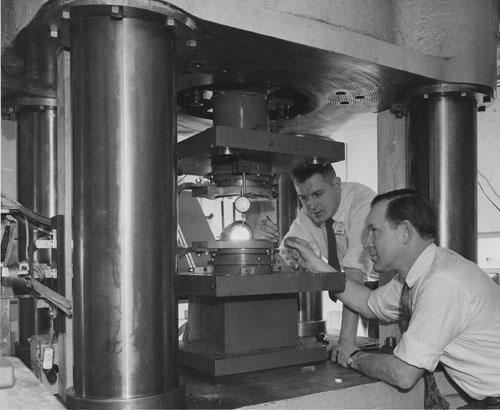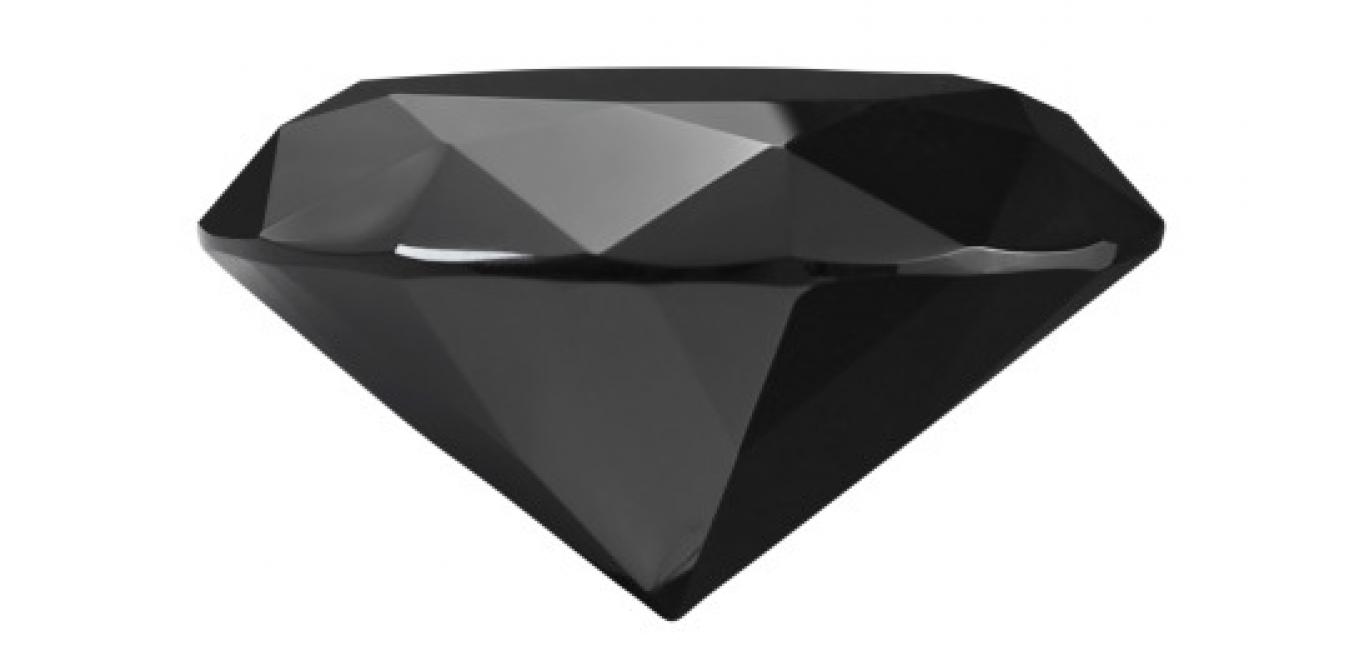In 1954, GE researcher H. Tracy Hall and three colleagues built a machine that squeezed carbon so hard it turned into nature’s hardest substance: diamond. Their discovery earned the team a spot in America’s National Inventors Hall of Fame, but it didn’t lead GE into the bling business. Instead, the company used the stones to make tools for cutting and polishing metals, glass and even teeth.

Above: GE’s “diamond press” produced pressure of 1.5 million pounds per square inch and temperature of 5,000 degrees Fahrenheit. The press squeezed a special metal-carbon mixture so hard that it turned after 20 minutes into synthetic diamond. Image credit: GE Global Research Top: Black diamond is the toughest form of natural diamond. Diamond and graphite are both “allotropes,” or different crystalline forms, of the same element: carbon.
Although GE eventually sold the diamond unit, it did not abandon carbon altogether. Scientists at GE Global Research, the birthplace of the synthetic diamond, are now working with silicon carbide – another hard, carbon-based material originally used for sandpaper. They’re using it to make heavy-duty microchips that can handle megawatts of power and make everything from solar panels to MRI scanners and oil pumps more efficient.
This cross-pollination of ideas and technologies can found everywhere around GE – from using MRI magnets to improve wind turbines to deploying jet engine technology inside power plants.
×
GE.com has been updated to serve our three go-forward companies.
Please visit these standalone sites for more information





